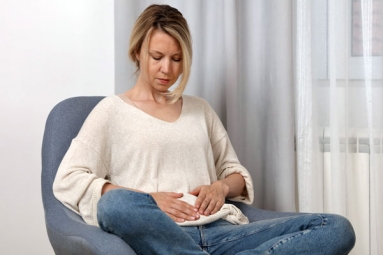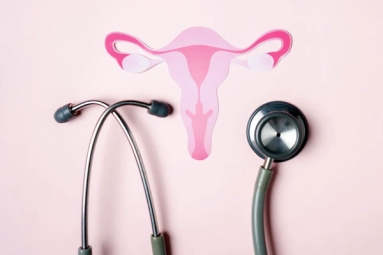
(Image source from: Canva.com)
Vulvodynia is a prevalent concern that many women grapple with, yet it is often misunderstood. This chronic pain condition affects the vulva, the external female genital region, causing persistent, burning, stinging, or raw sensations around the vaginal opening. These symptoms can make activities like intercourse, tampon use, or simply sitting incredibly painful and uncomfortable. Surprisingly, this condition is quite common, impacting an estimated 16 percent of women at some point in their lives. While vulvodynia can develop at any age, it most frequently arises in women between 18-25 years old or after menopause. The constant discomfort can profoundly impact a woman's quality of life, relationships, and mental well-being.
There are two main types of vulvodynia:
Localized Vulvodynia: This form of vulvar pain is limited to a specific area or spot. The most prevalent type is vestibulodynia or vestibulitis, where the pain is felt around the vaginal opening (vestibule). Other localized variants include clitorodynia (pain in the clitoris) and pain in Bartholin's glands.
Generalized Vulvodynia: In this form, the pain spreads across the entire vulvar region rather than being confined to a single spot. It can involve the labia, vestibule, clitoris, and even the perineum (the area between the vagina and anus).
The vulva may become painfully sensitive, with throbbing that can worsen due to pressure from sitting, tight clothing, or sexual activity. This pain can be categorized as either provoked (triggered by touch or pressure) or unprovoked/spontaneous (constant without an obvious trigger).
The most common symptom is a persistent, burning or stinging pain in the vulva area, ranging from mild discomfort to severe agony. This pain may intensify during certain activities like prolonged sitting, exercise, tight clothing, or sexual intercourse.
Many women with vulvodynia describe feelings of rawness, soreness, or irritation in the vulva, as if the skin is scratched or grazed. This irritated sensation is often exacerbated by any friction or pressure on the area.
For some, the pain specifically occurs at the vaginal entrance during penetration attempts, such as with tampon insertion or intercourse. This localized discomfort, known as "entry pain," can make intimacy extremely challenging and distressing.
Beyond the pain itself, vulvodynia may trigger muscle spasms or general pelvic floor tightness and tension. Other potential symptoms include burning during urination or abnormal discharge.
Vulvodynia can develop from a variety of causes.
Pinpointing the exact cause can be challenging, as the condition may stem from a combination of different factors. Some potential reasons and risk elements include:
Physical harm or trauma to the vulvar region, such as from childbirth, medical procedures, cancer treatment, or recurrent vaginal infections.
Inherited traits that make certain women more susceptible to developing the condition.
Hormonal shifts or imbalances that occur during menstrual cycles, pregnancy, or menopause.
Women of certain ages and with particular medical histories face a heightened risk of developing vaginal discomfort. This includes individuals between 18-25 years old, those going through menopause, and those with a history of persistent yeast infections or specific cancer treatments impacting the pelvic region. Similarly, women who have experienced vulvar trauma during childbirth or other incidents are also more susceptible.
Obtaining an accurate diagnosis is crucial for effectively managing this condition. Your gynecologist will likely start by ruling out other potential causes of your vaginal pain, such as infections or skin conditions. They may use a cotton swab test to map out the affected areas and look for any abnormalities. There is no universal treatment for vulvodynia, as the underlying causes can vary. However, common approaches include medication, such as low-dose antidepressants, anticonvulsants, or topical anesthetics to reduce pain signals, as well as physical therapy focused on pelvic floor exercises and massage to relax tense muscles. Lifestyle adjustments, like avoiding irritants, using lubricants during sex, and managing stress, can also provide relief. Finding the right combination of treatments may require some experimentation, so patience and close collaboration with your doctor are essential in monitoring your symptoms.
Dealing with persistent vaginal discomfort can be extremely stressful and anxiety-inducing. Prioritizing healthy coping mechanisms is crucial for your overall wellbeing. Techniques like meditation, deep breathing, yoga, or speaking with a therapist can help you manage these challenges more effectively.
Seeking specialized pelvic floor physical therapy can be tremendously beneficial for some individuals experiencing vulvodynia. A trained therapist can guide you through exercises and methods to relax and strengthen the pelvic floor muscles, which can alleviate tension and spasms contributing to vulvar pain.
While scientific evidence may be limited, some people find relief through alternative remedies like acupuncture, herbal supplements, or topical applications. It's important to discuss any complementary therapies with your healthcare provider to ensure they are safe and appropriate for your situation.
Surrounding yourself with a supportive network of loved ones who can offer empathy and encouragement can make a significant difference. Additionally, dedicating time to self-care practices that nurture your mental and physical health, such as stress management, gentle exercise, a nutritious diet, and adequate sleep, is vital. Approach this journey with patience, kindness, and compassion towards yourself.










